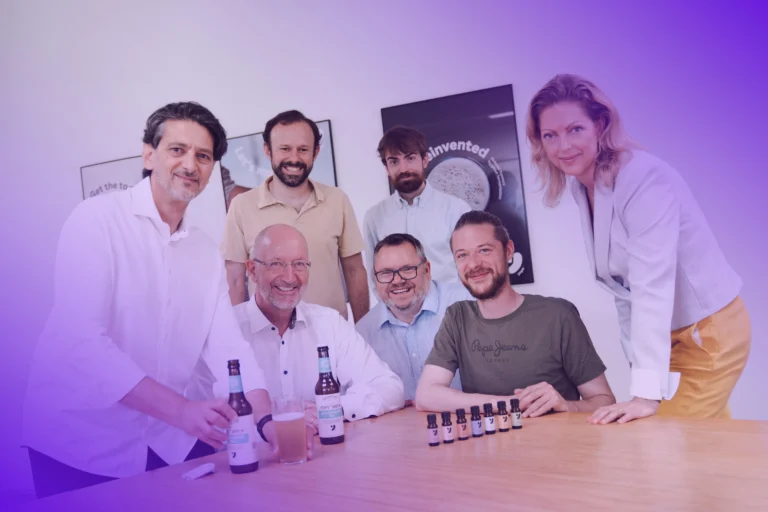

'Timing is everything': Study warns slow adoption of alternative proteins could derail climate goals
The world cannot meet its climate targets without cutting back substantially on animal-source foods – and how quickly people embrace alternatives like plant-based meats or cultivated proteins will make or break that effort. That’s the stark conclusion of a new study led by Galina Hale (University of California Santa Cruz), Vlad Oncescu (Senior Manager, Corporate & Growth Strategy, Accenture), and Ritesh Bhangale (Senior Manager, Accenture), published in Scientific Reports. The researchers warn that even a few years’ delay in shifting global diets could force a far larger portion of animal products off plates by 2050 to keep food system emissions within safe limits.
“Our results show that alternatives to animal-source foods, if they are developed or improved to satisfy consumer preferences, can substantially reduce greenhouse gas emissions from the food system to levels consistent with global climate goals,” the authors write.
Animal agriculture is a heavyweight in the climate equation, responsible for a disproportionate share of greenhouse gas emissions while delivering a relatively small fraction of global calories. If global diets continue converging on high-animal-protein patterns typical of wealthy nations, the researchers estimate cumulative emissions from the food system could reach as high as 639 gigatonnes of CO2 equivalent between 2020 and 2050. That’s well beyond the roughly 390 gigatonnes the food sector can emit if the world is to keep global warming under 2 degrees Celsius with a 67% chance, according to the study.
The researchers modeled scenarios ranging from business-as-usual diets to complete shifts to plant-only or alternative-protein-based diets. They found that replacing animal-source foods with alternatives – such as plant-based products, cultivated meat, or fermentation-derived proteins – could cut cumulative emissions by up to 33% compared to a business-as-usual scenario. But achieving those cuts depends heavily on how quickly consumers embrace new products.
Delaying the transition even a few years can have severe consequences. In the researchers’ benchmark scenario, keeping the food system within its carbon budget would be possible if 60% of animal-source foods are replaced with alternatives by 2050, provided the transition begins before 2023. A delay until 2026 would require 100% replacement of animal-source foods to stay under the same emissions threshold.
“Because cumulative emissions are key, delays in matching the attributes of incumbent ASF products and demand take-off, or limited ultimate replacement share, reduce the impact substantially,” the authors warn, using ASF as shorthand for animal-source foods.
The report emphasizes that alternatives to animal-source foods hold unique promise because they can allow consumers to maintain familiar tastes and culinary traditions without the climate cost. While plant-based alternatives have already gained market traction, higher-tech solutions such as cultivated meat and fermentation-based proteins remain in development or await regulatory approval in many countries. The researchers group these emerging solutions under the term “cultured” alternatives.
Even if alternatives are adopted widely, the climate math is daunting. The authors’ calculations show that a shift to a plant-only diet – without technological alternatives – would need to begin no later than 2025 and reach 100% global adoption by 2050 to stay within the food sector’s carbon budget. Given the cultural and economic significance of meat and dairy in many parts of the world, the researchers believe this is unlikely without alternatives that replicate the taste, texture, and convenience of animal products.
“Incremental changes – such as shifting to a healthier diet in developed countries – are not likely to be sufficient due to the continuing growth of ASF consumption in developing countries driven by continuing population growth and increasing wealth,” they note.
Under business-as-usual projections, the world’s total caloric demand will rise by 24% by 2050. But the share of calories from animal-source foods is projected to nearly double, from 15.6% in 2020 to almost 25% in 2050. Meat alone would account for 11.6% of calories consumed, up from 8.2% in 2020.
Such trends would push annual emissions from the food system to double between 2020 and 2050, the authors estimate, driven primarily by rising meat and dairy consumption. The study cites previous research showing even the lowest-impact animal products produce more greenhouse gases than the average vegetable crop.
Technological advances could help. Cultivated meat, for instance, could offer familiar eating experiences with a much smaller environmental footprint – provided its production relies on clean energy. But technological progress alone won’t guarantee success. Adoption curves for new consumer products, the study explains, tend to follow a predictable pattern: slow early growth until the products reach parity with incumbents on attributes like taste and price, then a rapid surge in popularity as economies of scale kick in.
This adoption dynamic – modeled using so-called Gompertz curves – underscores why timing matters so much. Once consumers perceive alternatives as equal or superior to traditional animal products, adoption could accelerate. But reaching that tipping point will require investment, innovation, and supportive policies.
The researchers draw parallels to the energy sector, where government subsidies and policy support have helped accelerate the deployment of solar and wind power. Similar public and private investment will be needed for alternative proteins, they argue.
“Policy interventions to help jump-start the transition away from ASF are likely to be highly impactful for reaching climate goals,” they write, suggesting both supply-side incentives for research and demand-side measures to encourage adoption.
One striking aspect of the study is that its emissions estimates are conservative. The authors deliberately excluded potential benefits from carbon sequestration on land freed up by reduced livestock production, citing uncertainties about the timing and scale of such impacts. Previous studies have estimated that restoring ecosystems on such land could sequester as much as 547 gigatonnes of CO2 by 2050, potentially turning the agricultural sector into a net carbon sink. But these benefits are difficult to guarantee and may take decades to materialize.
Another uncertainty is whether purely plant-based diets can fully meet global nutritional needs without animal products. The study notes that most nutrients can be obtained from plant-based foods or supplements, although some, like vitamin B12, certain omega-3 fatty acids, and taurine, require particular attention. Cultivated and fermented alternatives could help fill those gaps.
Hale, Oncescu, and Bhangale conclude that alternatives to animal-source foods appear to be the most promising single intervention to reduce food system emissions. However, they caution that waiting too long could close the window for a manageable transition.
“Given current trends toward a rising ASF share, [a plant-only transition] is not likely,” they write. “Thus, innovation in alternatives to ASF needs to be rapid and supported by a strong regulatory environment and investment from both the private and public sectors.”
With the clock ticking toward 2050, the message from the researchers is blunt: the world can still feed itself – and protect the climate – but only if it moves faster.
If you have any questions or would like to get in touch with us, please email info@futureofproteinproduction.com


-p-800.jpg)



